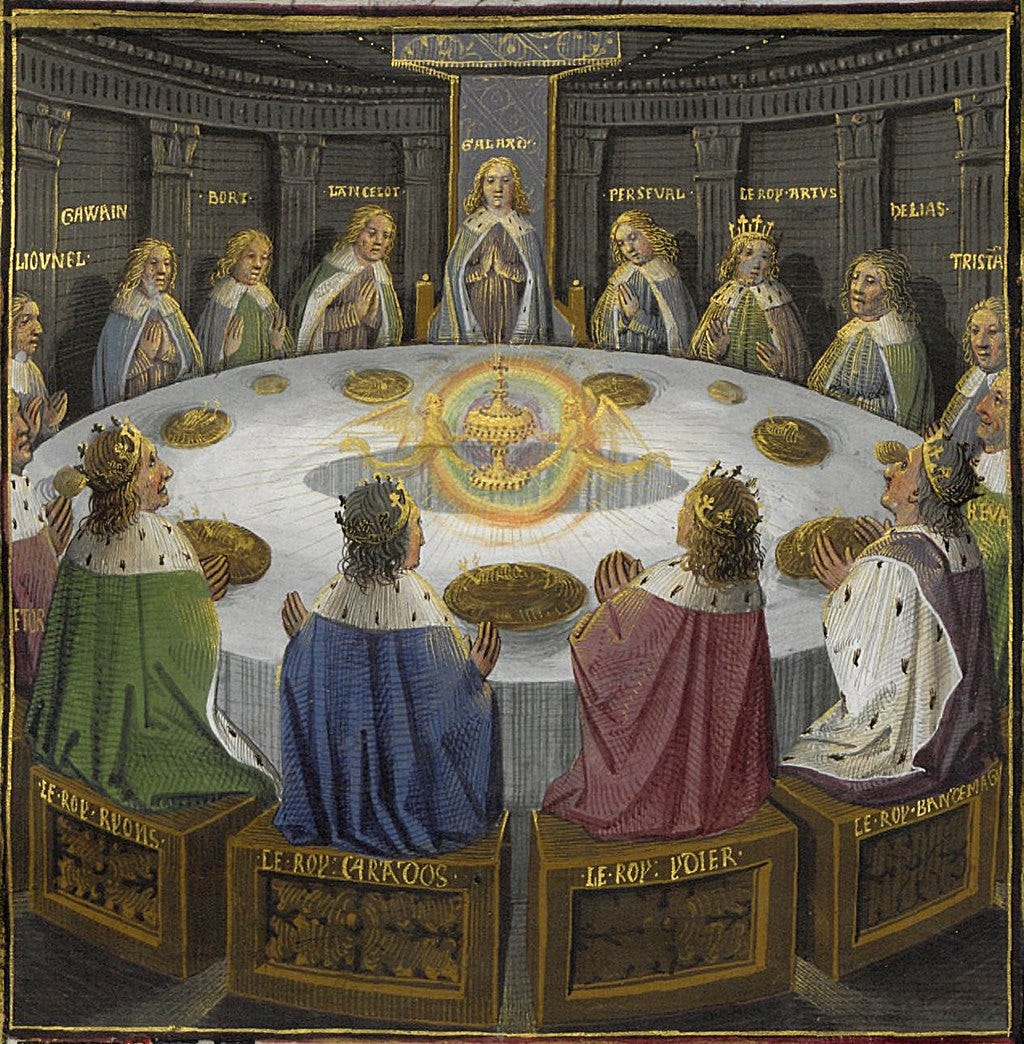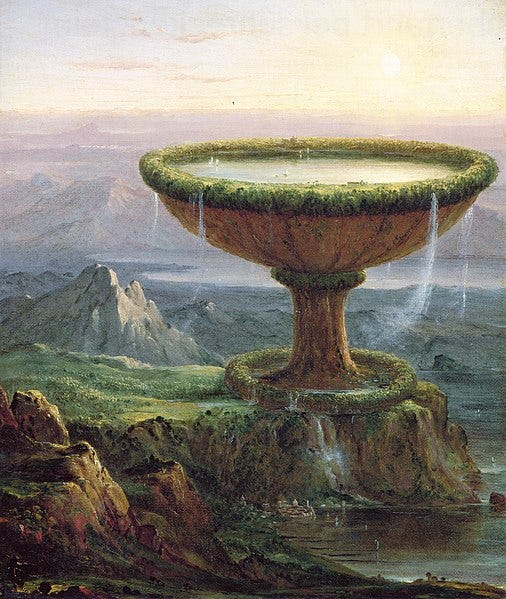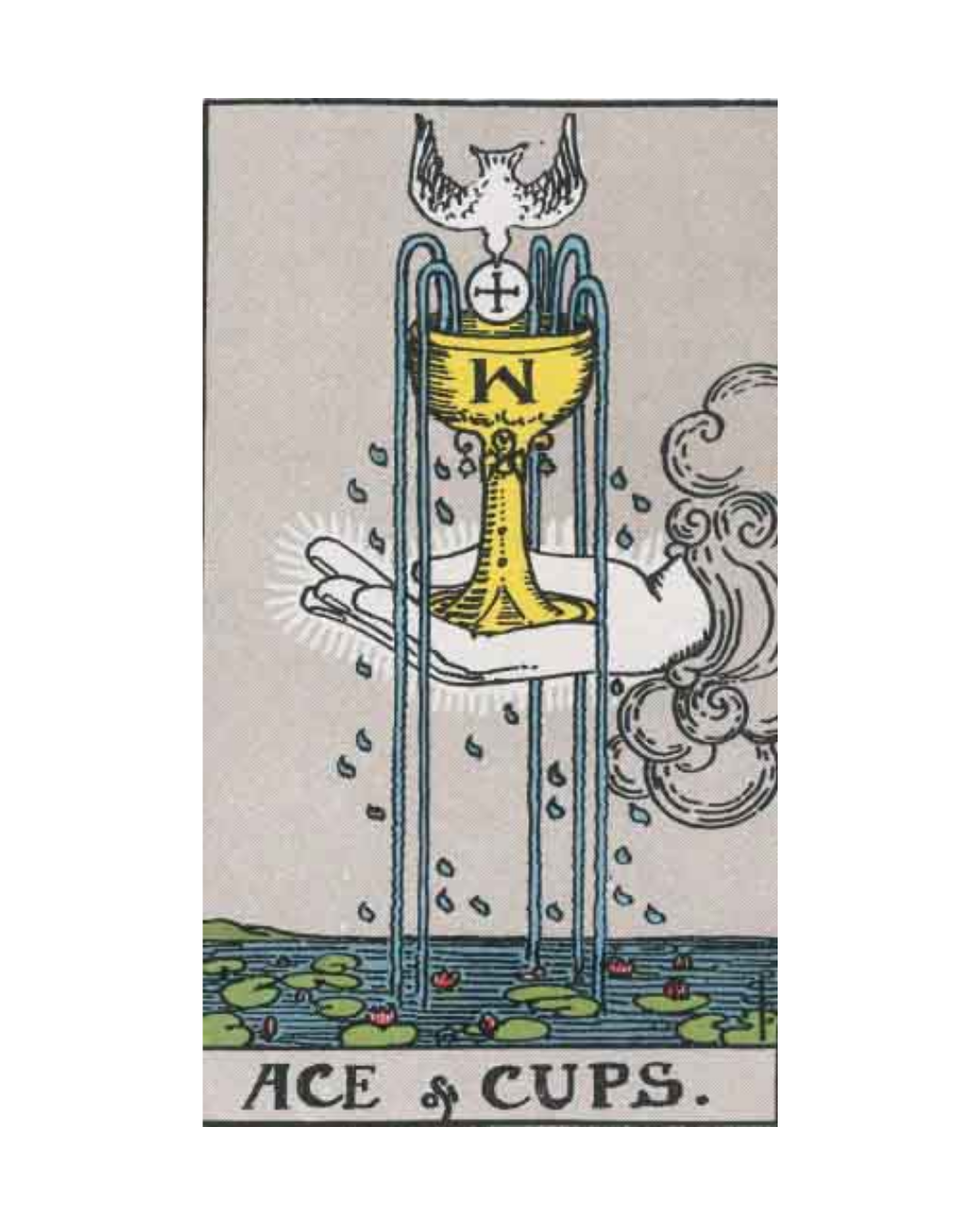
My first “grown-up” literary love affair was with Arthurian legend. I spent my fifteenth summer lost in Camelot - questing my way through every version of the story I could find. I inhaled retellings and stumbled through Sir Thomas Malory’s 15th-century compendium of Arthurian stories, Le Morte D’Arthur. I watched every film and television adaptation I could get my hands on, escaped to medieval fairs in suburban Ohio on the weekends, ate breakfast, lunch and dinner seated at a Round Table of my own imagination.
My Arthurian appetite had been piqued years earlier: As an early reader, my first chapter books were instalments of The Magic Tree House, through which author Mary Pope Osborne reimagines the oft-maligned Arthurian sorceress, Morgan Le Fay, as a benign guardian of history and stories.
As I progressed to more advanced middle-grade fiction, I felt undeniably drawn to the Arthurian elements of the Harry Potter books: Albus Dumbledore’s Merlin-esqueness; the archetypal similarities between Harry and T.H. White’s Wart; the series’s many facsimiles of the Holy Grail - the Philosopher’s Stone, Goblet of Fire, Horcruxes. (More on my complicated relation to Harry Potter - the magic and the fucking late-stage mess of it all in later letters, I’m sure).
The Grail looms large over Arthurian convention (particularly the medieval strains of the myth). Depending on which stories you read, the Knights of the Round Table may be guardians of the Grail, or pilgrims on quests to recover it from an ancient hiding place.
One of the most foundational narrative offshoots from Arthurian myth is the story of the young knight - sometimes Percival, sometimes Galahad - who finally finds the Grail. It’s his purity of heart that allows him to wrest the mystic cup from obscurity … an echo of Arthur’s own triumph with the sword in the stone, and also an obvious allegory for living the kind of chaste, blameless life that medieval romances put on a pedestal.
The Holy Grail is bigger, older, and deeper than a boy king or morality tales from the height of chivalry. It’s older and more complex, too, than its popular origin myth as a Christian relic - the chalice that caught the blood from Christ’s crucifixion wounds.
The archetypal resonance of a cup full of life everlasting - of knowledge, of healing, of purity, of the very blood of God - is primordial. It shows up across time and cultures, and even if it didn’t - I think we’d all know it intimately anyway. Because really, isn’t it just a symbol for one of the most basic human experiences: Thirst?
And I’m not just talking about the literal need for hydration - though of course the broader metaphor springs (indeed) from there. I’m talking about the desires we would go to the ends of the earth to satisfy.
I’m talking about the Grail as the Platonic ideal of having our every need and want met, of being well and truly and forever quenched - the endless wellspring of everything we could ever hope for, running over our fingers and dribbling down our chins.
It’s a heady dream, but a bit useless - we never find it, that bottomless cup - or at least we never find it full. And even if we did, isn’t the truth that at some point, having our fill of perfection is more than a little bit boring?

A personal, metaphorical Grail quest is basically the ultimate thirst trap - an appealing mirage that blurs flaws and makes promises beyond what it can possibly keep. A trap I fall into all the time, in all kinds of ways - especially in my conception of creativity.
The most alluring, most elusive Grail myth in my life is the concept of consistent creative flow. The religious-and-as-yet-unproven faith I have that making art can come easy. 1
For me, it’s the triumvirate of those three words together that have turned ordinary experiences into my own personal quest-worthy Grail. I can consistently do many things - like drink coffee most mornings and open my laptop and feed my dog. I am, inherently a creative person; I have an imagination, and I use it. I do experience periods of flow, where I feel in the groove with whatever I’m doing. The problem comes in stringing them all together. Consistent. Creative. Flow.
I am unquenchably thirsty for a life where my creativity always comes first and always comes easy. And God, would I love to find a bottomless cup of creative energy to drink from, so that I can finally be the ideal artist of my own imagination. Unshakeable. Undistractable. Unstoppable. Unputdownable.
I have to remind myself often - like all the time - not to mythologise my creative practice. That it’s better to drink out of whatever cup is in the cupboard right now than it is to go on an epic sidequest in search of The Answer that will Forever Unlock my Grail Quest for consistent creative flow.
The tarot helps. The Grail is omnipresent in the suit of Cups, a sequence of cards that charts the high highs and low lows of experiencing all the feelings, ideas, desires, and losses that flow through us. Turning to these cards reminds me that flow is never consistent; if it was, it wouldn’t be flow at all, but stillness. So, even if I were to commit to seeking out my Grail, it would forever be a series of ups and downs, too - an inconsistent creep toward something I may never find, while all the water in the world passes me by.
Something else worth noting: In Pamela Coleman Smith’s illustrations for the 1909 Rider Waite Smith deck, a total of 59 cups are featured across the full suit. Most of them are completely identical - golden goblets with minimal details. Most of them are empty - save the Ace with its flowing fountain, the Six with its blooming flowers, the Seven with its dreams and visions, and the Page with its curious fish. (More on all of these another time.)
But two of these Cups are really not like the others. The Ace and the Queen both feature chalices that deviate from the functional design of all the other Cups in the suit.
The Ace of Cups is only subtly different from its suit siblings. It has a rounder, shallower globe, but more importantly, it has an inscription. What the inscription means is very much anybody’s guess - tarot readers can’t even agree if it’s a ‘W’ or an ‘M’.
If it’s a W, it might stand for A.E. Waite, the occultist who oversaw Coleman Smith’s creation of the cards and contributed his personal divinatory and magickal meanings to the little white manual that accompanies every purchased RWS deck.
If you’re into the Christian Mysticism at play in the tarot, it might stand for Word, which the Bible says was with God from the very beginning of time - other symbols like the Dove and the communion wafer seem to support this. Maybe this communion we’re witnessing is Creation - God pouring out their power and making a World with their Words (a welcome metaphor even for godless creatives, I think).
It could be nothing more or less than a label - W for Water, the element literally contained in this chalice, and thematically explored throughout the suit of Cups.
If it’s an M, it might be Magic - a kind of power we’re all thirsty for, that promises a life full of met needs. Or Manifestation, transforming the Ace into a lesson about filling your own cup if you want to drink.
Or, my personal favorite - M for Mystery. Maybe the Ace of Cups holds the clues to everything we can’t know. Or maybe there’s something freeing in accepting that even if we drank the elixir inside, so much would still - always - be unknowable to us.
In any case, the Ace of Cups is a symbol for overflowing potential. It’s full of every possible meaning, idea, creative sustenance. Its life-giving power is enough to fill up the oceans, to bring the lotuses on the surface of the water to life.
It’s also only the beginning. There are thirteen more cards to follow, and many empty cups along the way. Flow usually does feel abundant at the beginning of an idea or a project. It’s sustaining our creativity through inevitable stages of drought that gets us (or me, at least) fixated on that mirage of consistent creative flow.
At the end of the suit, we get something else entirely: The Queen and their one-of-a-kind Cup. 2
The Queen of Cup’s Extra-with-a-capital-E chalice is maybe my favorite detail in the entire Rider Waite Smith deck. It’s not the functional goblet that dominates the rest of the suit. It’s fucking art. It’s detailed, it’s original, it’s kind of weird. And I’m not entirely sure it can be drunk from at all, at least not without a straw attachment.
Here’s what I like to think: The Queen didn’t go on some quest to hunt down an elusive relic, or send some valiant knight to do it for them. They crafted their own Cup. They made their own rules. If the rest of the suit is a lesson in accepting that flow comes and goes, then the Queen stands as a next level epiphany: if the flow ain’t there, make your weird shit anyway. You may never get the grail, but you can fashion a cup out of pretty much anything, any time.
Despite my best efforts to sit down and write this piece in one go, I’ve wandered in and out of the draft. Fiddling and hoping for flow. If I wandered down the road long enough, maybe the universe would reward the effort. Occasionally, in its own way, it did. Glimpses of flow on the horizon, reasons to keep going. Pots of gold at the always faraway feet of rainbows, to start mixing metaphors, became lighthouse beacons through the fog. I never quite reached the rich shores they beamed from, but I got to another beach instead. One where a Queen presides at water’s edge, toes in the tide, couture Cup in hand. “Look what I made while I waited here for you.”
Not consistent creative flow, but a picture of the possible.
Not a grail, just a gift. •
Join the conversation in the comments:
What did this piece bring up for you? I’d love to know:
what are your own creative thirst traps?
how do you see the relationship between tarot and grail mythology?
what do you think the inscription on the ace of cups stands for?
anything else you’d like to share
Support The Shuffle
If you enjoyed reading this letter and you’re in a position to help sustain this newsletter, I’d love it if you’d upgrade to a paid subscription. By subscribing for as little at £1/$1.25 per week, you wouldn’t just be making my day and supporting the hard work I put into writing, you’d also be getting some much-deserved extras from me, including 20% off 1:1 tarot sessions with me, access to creative workshops, and bonus material sent straight to your inbox.
If you’re not in a position to add another subscription to your budget, I get it! You can support me for free by sharing this piece to your friends and followers now - I’d be so grateful for your seal of approval!
Thanks for reading x
Look, if you’ve got that - if consistent creative flow doesn’t sound like something you’d scour the earth for if only you knew where to start looking, because you just happen to have a nice little natural spring bubbling up in your backyard and you’ve never been thirsty in your goddamn life, then good for you. Shut up and drink your miracle water. And don’t bother offering to share - what works for you would probably just rot my sensitive little gut. Also, I’m sorry I just don’t believe you. But anyway, I bitterly digress.
Traditionally, the Tarot suits end with the King, but in my upcoming book, Tarot for Creativity, I flip the script and finish each sequence on the Queen instead. I like the idea that these Minor Arcana journeys conclude not with the outer perception that we’ve mastered the power of the suit, but with the internal confidence that the suit’s magic is more than a tool to wield, it’s part of us.









The Titan's Goblet is gorgeous, never seen that before!
What you write about consistent flow reminds me of the book I'm reading, Fearless Creating by Eric Maisel, where he emphasises that every stage of the creative process is attended by a kind of anxiety, and that part of the work is actually inviting that anxiety in and then managing it. He points out that ridding oneself of anxiety makes an artist settle too soon, forgoing better or deeper or truer work in order to feel more certain. He says the work has a "necessary chaos that must not be avoided by too much knowing". He compares anxiety in the process to the itching as a wound heals, and quotes Camus on the freedom of art as "a perpetual risk, an exhausting adventure". It helps me a lot to remember that my desire for consistent easy flow is a natural desire but is also contrary to my actual goal of making the work I'm called to make. :)
Such a fascinating connection! What struck me while reading is that the vessel of the Grail is a manmade object. We’re taking something natural, like the flow of water/creativity, and trying to harness it. A spring can be ever-flowing, but it doesn’t collect on its own unless it finds a pool.